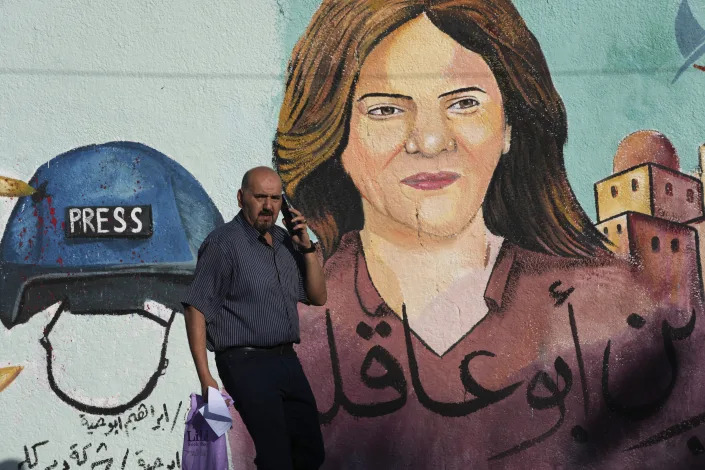Western Architecture is Making India's Heatwaves Worse
Ciara Nugent
Mon, May 16, 2022,

[India RF: Residences]
Arched windows, reflecting on floor surface, likely at old palace in Jaipur, India. The design helps keep heat out. Credit - Robert Nickelsberg/Getty Images
Benny Kuriakose remembers when his father built the first house in his village in the southern Indian state of Kerala with a concrete roof. It was 1968, and the family was proud to use the material, he says, which was becoming a “status symbol” among villagers: the new home resembled the modern buildings cropping up in Indian cities, which in turn resembled those in images of Western cities.
But inside, the house was sweltering. The solid concrete absorbed heat throughout the day and radiated it inside at night. Meanwhile, neighboring thatch-roofed houses stayed cool: the air trapped between gaps in the thatch was a poor conductor of heat.
The Kuriakoses’ experience was an early taste of a phenomenon that, over the next few decades, spread across most of India’s big cities. As a more standardized international approach to building design emerged, many Indian architects abandoned the vernacular traditions that had been developed over thousands of years to cope with the weather extremes of different regions. The earthen walls and shady verandas of the humid south, and the thick insulating walls and intricate window shades of the hot dry northwest, were swapped for a boxy modern style. Today, buildings in downtown Bangalore often look like those in Ahmedabad, in the north, or Chennai, in the east—or those in Cincinnati, Ohio, or Manchester, England.
“In most cities, people have blindly followed the Western model,” says Kuriakose, an architect now based in Chennai. “There was no attempt to look at the local climate. There was no attempt to look at the materials which are available.”
A version of this story first appeared in the Climate is Everything newsletter. To sign up, click here.
In the climate change era, that uniformity is looking like a mistake. Large parts of India have been stifled by a spring heatwave since April, with temperatures lingering close to 110°F for weeks in some places, and topping 120°F in Delhi this week, making it dangerous to go to work or school—all weeks before the official start of summer. Spiking energy demand for cooling has helped trigger daily blackouts in cities, and what AC units are running are belching hot air into streets, worsening the urban heat island effect. As such heatwaves become increasingly common and long-lasting, experts say India’s modern building stock will make it harder for Indians to adapt.
Environmentalists are calling for a fundamental rethink of how India builds its cities. There are some positive signs. A growing number of sustainability-minded architects are reviving vernacular approaches. And in February the Indian government pledged to revise urban planning guidelines and investments to train planners to better design cities. Progress is slow, though, says Aromar Revi, director of the Indian Institute for Human Settlements (IIHS), a research-focused university. “We need to essentially affect the entire fabric of our cities, from planning to land use, to building, to transportation systems,” he says. “We are only at the start of that conversation.”

Western-style skyscrapers in Kolkata, India, April 3, 2022.Indranil Aditya/NurPhoto—Getty Images
How traditional architecture lost ground in Indian cities
The architecture of Indian cities began to change rapidly in the 1990s, when the country transitioned to a market-based economy. As construction boomed, Western or globalized styles became the norm. The shift was partly aesthetic; developers favored the glassy skyscrapers and straight lines deemed prestigious in the U.S. or Europe, and young architects brought home ideas they learned while studying abroad. Economic considerations also played a role. As land became more expensive in cities, there was pressure to expand floorspace by eliminating thick walls and courtyards. And it was faster and easier to throw up tall structures using steel and concrete, rather than use traditional earth blocks which are suited to lower-rise structures.
The consequence of that cookie-cutter approach was to make buildings less resilient to India’s high temperatures. The impact of that once seemed minimal. It could easily be offset by electric fans and air conditioning, and the energy costs of cooling were not developers’ problems once they sold their buildings. “Where a home [built in the vernacular style] needs around 20 to 40 kilowatt hours per meter squared of energy for cooling, today some commercial places need 15 times that,” says Yatin Pandya, an architect based in Ahmedabad. When AC units are turned on to help people sleep at night, they release heat into the streets, which can increase the local temperature by around 2°F according to U.S.-based studies. During the day, depending on their orientation, glassy facades can reflect sunlight onto footpaths. “You’re creating [problems] in every direction.”
The shift away from climate-specific architecture hasn’t only affected offices and luxury flats, whose owners can afford to cool them. To maximize urban space and budgets, a massive government housing program launched in 2015 has relied largely on concrete frames and flat roofs, which absorb more heat throughout the day than sloped roofs. “We’re building hot houses. In certain parts of the year, they will require cooling to be habitable,” says Chandra Bhushan, a Delhi-based environmental policy expert. He estimates that roughly 90% of the buildings under construction today are in a modern style that pays little attention to a region’s climate—locking in increased heat risk for decades to come.
Even small artisanal construction crews, which are responsible for the majority of homes in India, have leaned into more modern, standardized styles, says Revi, the IIHS director. These teams rarely have a trained architect or designer. “So they build what they see,” he says. “They might build traditional elements into their village houses, but when they come to the city, they’re driven by the imperatives of the city, the imaginaries of the city. And there the international style is the aspiration.”
Similar shifts have happened in developing countries all over the world, with cities from the Middle East to Latin America taking on the “copy and paste texture of globalized architecture,” says Sandra Piesik, a Netherlands-based architect and author of Habitat: Vernacular Architecture for a Changing Planet. As the global construction industry embraced concrete and steel, local materials, designs, and technologies became displaced—with lasting consequences. “Some of these traditional methods didn’t undergo the technological revolution that they needed,” to make them more durable and easier to use on a massive urban scale, Piesek says. “We focused instead on [perfecting] the use of concrete and steel.”
A climate comeback for vernacular architecture
A movement to revive more regionally-specific styles of architecture—and combine them with modern technologies—is well underway in India. Over the last decade, thousands of architects, particularly in the experimental township Auroville on the east coast of Tamil Nadu state, have promoted the use of earth walls and roofs; earth absorbs heat and humidity, and it can now be used to build larger and more complex structures thanks to the development of more stable compressed blocks. In the dry hot northern city of Ahmedabad, which has suffered some of the country’s deadliest heatwaves in recent decades, Pandya’s firm Footprints E.A.R.T.H., uses careful orientation and overhanging roofs and walls to shade its buildings from heat, and central courtyards for ventilation.
“We are course-correcting now,” says Bangalore-based architect Chitra Vishwanath, who built her own home and hundreds of other buildings using earth. Larger universities are teaching students to build in a climate-specific way, she says, while nonprofits and artisanal construction firms are running workshops teaching this approach to architects and small-scale builders. “Younger architects who are graduating today are extremely sensitive to climate,” Vishwanath adds. “I would say in another 5, 10 years westernized style buildings won’t be built so much.”
Wider adoption of climate-sensitive architecture would greatly reduce the energy needed to cool buildings, Vishwanath says. That could be crucial for India in the coming years. While only around 8% of Indians had air conditioning in their homes in 2018, as more people enter the middle class and can afford to buy their first unit, that figure is expected to climb to 40% by 2038, according to the government’s 2019 National Cooling Plan. Health experts say AC can no longer be considered a “luxury” in India’s increasingly brutal climate, and that expanding use for low-income households is essential to both saving lives and supporting India’s economic development. But it will come at a high cost in terms of India’s greenhouse gas emissions—unless cleaner cooling technologies can be developed and rolled out rapidly.
Increasing the use of traditional materials in India’s sprawling construction sector would also make a dent in the country’s emissions. Vernacular architecture tends to use more natural, locally-sourced substances like earth or timber, rather than concrete and steel, which are created through carbon-intensive industrial processes and transported from thousands of miles away. A 2020 paper published by Indian researchers in the International Journal of Architecture found that the production of vernacular materials required between 0.11 MJ and 18 MJ of energy per kilo, compared to 2.6 MJ to 360 MJ per kilo for modern materials.
It wouldn’t be feasible to replace all the modern materials used in India’s buildings with vernacular counterparts. Though technological advances are making it possible to build larger, multi-storey buildings with earth, it wouldn’t work in a skyscraper. And some traditional features, like sloping roofs and detailed window shades are too expensive for many people to consider when building their homes. Perhaps most importantly: in cities, the high cost of land makes it extremely difficult to find space for verandas and courtyards.
Given those challenges, Kuriakose says the future of Indian architecture won’t be simply reverting to how things were fifty years ago, before his grandfather installed their concrete roof. The way forward is to channel the locally-rooted problem solving strategies of traditional architects. His firm, for example, has found ways to build traditional sloped roofs, which allow water runoff during monsoon seasons and prevent heat absorption, while incorporating concrete in some elements to make them cheaper. “We are trying to use the knowledge system which has been passed on from generation to generation over the centuries,” he says. “Not to blindly follow how villagers used to do things.”
Pandya, the Ahmedabad architect, puts it another way. “Sustainability is not a formula—what works in Europe might not work here,” he says. “Like a doctor, you have to understand the patient, the symptoms, the conditions—before you arrive at the cure.“













